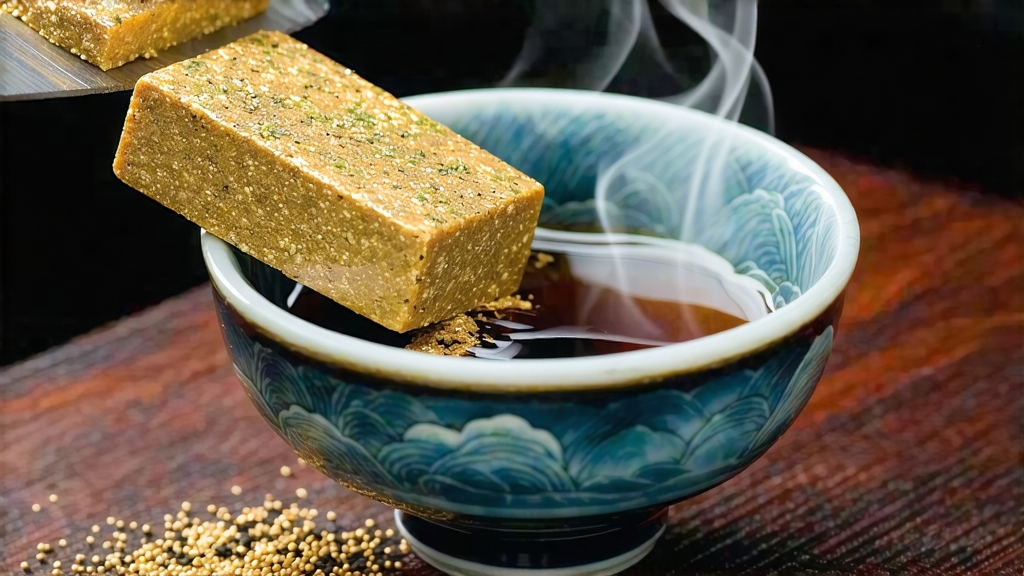
Few beverages carry the quiet gravitas of Fu brick tea. Pressed into dense, chocolate-brown blocks that weigh exactly one kilogram, it looks more like a bar of ancient currency than something to drink. Yet when hot water meets its crumbling surface, the room fills with the scent of autumn forest floor, stewed plums, and a faint suggestion of fresh hay. This is the moment when newcomers realize that “black” tea in China does not mean the brisk, coppery liquor of English breakfast, but a living, breathing ecosystem compressed into a brick and patiently aged until it glows from within.
Fu brick—Fú zhuān chá in Mandarin—belongs to the dark-tea family known collectively as hei cha. Unlike the better-known pu-erh, Fu brick was born on the Silk Road, not the Tea Horse Road. Its story begins in the 1368–1644 Ming dynasty, when court officials in Xianyang, Shaanxi province, needed a tea that could travel west without spoiling. Caravans hauling silk and spices required a lightweight, non-perishable form of tea to barter for Central Asian horses. The solution was to steam, pile-ferment, and press sub-grade green tea leaves into bricks so hard they could be strapped to camel saddles for the 3,000-kilometer trek. Somewhere along the journey, a yellow dust—later identified as the beneficial mold Eurotium cristatum—began to bloom inside the bricks, imparting a mellow sweetness that made the tea more valuable at every oasis. By the Qing dynasty, imperial edicts fixed the weight, size, and even the 5 % moisture content of “Jingyang Fu brick,” turning a caravan convenience into a state monopoly.
Today the geographical indication remains narrow: authentic Fu brick can only be produced in the 30-km corridor between Jingyang and Xianyang counties on the Guanzhong plain. The raw material, however, arrives from four mountain provinces—Hunan, Guizhou, Yunnan, and Sichuan—where coarse summer leaves rich in polysaccharides are cheap enough to justify the labor-intensive transformation. These leaves, called “black knife” because of their dark color and knife-like shape, are too astringent to sell as green tea; Fu brick is their Cinderella story.
Production follows a calendar that has changed little since the Ming era. In early June, truckloads of sun-withered maocha reach the state-owned Jingyang factory. Workers first “steam soften” the leaf for 90 seconds at 102 °C, rendering it pliable without cooking it. The hot leaf is then piled into 1.5-meter heaps inside underground fermentation chambers whose walls are black with centuries of spores. Here the magic of wet piling—wo dui—takes place. A single heap can weigh 8 tons; inside, temperatures climb to 55 °C, and humidity hovers at 85 %. Every 48 hours the pile is turned by barefoot workers who rely on muscle memory to judge readiness: when the leaf feels like damp suede and smells of sweet corn, it is time to stop. This phase lasts 18–22 days, shorter than ripe pu-erh, because the goal is not deep earthiness but a substrate hospitable to Eurotium cristatum.
Next comes the critical step that gives Fu brick its nickname “golden flower tea.” The fermented leaf is re-steamed, pressed into brick molds under 25 metric tons of pressure, and wrapped in cotton paper perforated with 1 mm holes. The bricks are then slid into a 28 °C “flowering room” for 7–10 days. Inside this warm, humid incubator, Eurotium cristatum germinates, forming tiny yellow spherical ascocarps—visible to the naked eye as golden speckles. Masters aim for a density of 300,000 flowers per gram of finished tea; fewer and the liquor tastes flat, more and the aroma tilts toward damp basement. Once the flowers have bloomed, bricks are transferred to a drying loft where charcoal fires gently reduce moisture to 9 % over 20 days. The entire cycle, from leaf to market, consumes 105 days and involves no fewer than 28 pairs of human hands.
The result is a brick so dense it must be coaxed apart with a tea knife. A practiced wrist rocks the blade along the brick’s natural fracture